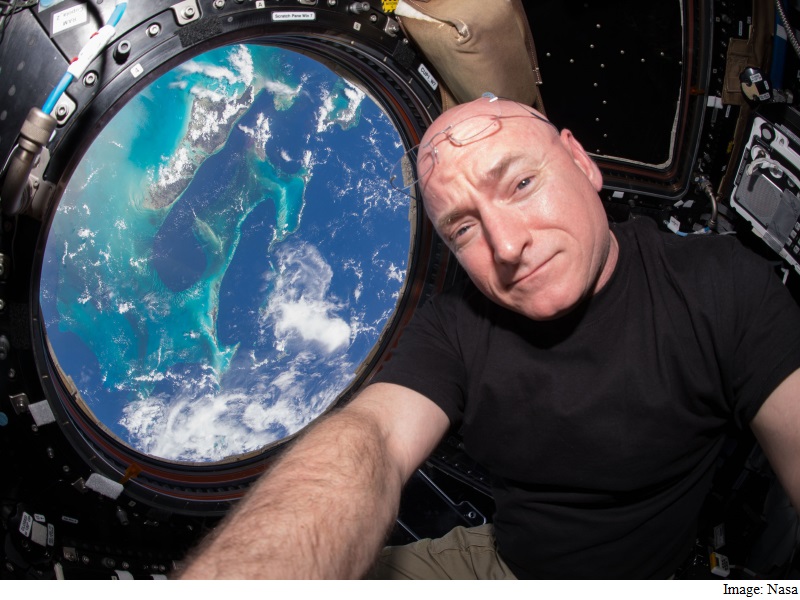- Home
- Science
- Science News
- Nasa's Scott Kelly to Return From ISS Next Week
Nasa's Scott Kelly to Return From ISS Next Week

Kelly paved the way for future missions including Mars when he embarked on a one-year mission. The year-long endeavour has seen Kelly accomplishing several key missions, including growing the first space vegetable and flower, the US space agency said in a statement.
Nasa has partnered with other space agencies to conduct numerous human research investigations to see how the human body changes during a year in space.
Coinciding with the one-year mission is the twins study. Scott's identical twin brother Mark, himself a former astronaut, is spending the year on Earth, enabling researchers to focus on a near-identical comparison of the brothers' genomics profiles - something never captured before in human space research.
This new field of study, akin to personalised medicine, produces so much information and data to analyse that it's hard to imagine.
"The mission will continue even after Scott returns," said John Charles, chief scientist of the Nasa Human Research Programme.
"For the one-year mission research, we will be collecting post-flight medical data three-months and six-months after he is back on Earth. For the twins study research, we will continue to collect data as far out as a year after his return," he added.
The post-flight data are as important as the inflight data to help scientists learn how to send humans safely to Mars and return them safely to Earth.
To date, Nasa has approximately 15 years of data from the space station about how space affects the human body on six-month missions.
Now, the "Human Research Programme" is building on that foundation by proposing more international collaboration on future one-year space station missions.
For the latest tech news and reviews, follow Gadgets 360 on X, Facebook, WhatsApp, Threads and Google News. For the latest videos on gadgets and tech, subscribe to our YouTube channel. If you want to know everything about top influencers, follow our in-house Who'sThat360 on Instagram and YouTube.
Related Stories
- Samsung Galaxy Unpacked 2025
- ChatGPT
- Redmi Note 14 Pro+
- iPhone 16
- Apple Vision Pro
- Oneplus 12
- OnePlus Nord CE 3 Lite 5G
- iPhone 13
- Xiaomi 14 Pro
- Oppo Find N3
- Tecno Spark Go (2023)
- Realme V30
- Best Phones Under 25000
- Samsung Galaxy S24 Series
- Cryptocurrency
- iQoo 12
- Samsung Galaxy S24 Ultra
- Giottus
- Samsung Galaxy Z Flip 5
- Apple 'Scary Fast'
- Housefull 5
- GoPro Hero 12 Black Review
- Invincible Season 2
- JioGlass
- HD Ready TV
- Laptop Under 50000
- Smartwatch Under 10000
- Latest Mobile Phones
- Compare Phones
- Infinix Smart 9 HD
- Lava Yuva Smart
- Samsung Galaxy S25 Ultra
- Samsung Galaxy S25+
- Samsung Galaxy S25
- Realme 14 Pro 5G
- Realme 14 Pro+ 5G
- Itel Zeno 10
- Asus Chromebook CR11
- Lenovo Yoga Slim 9i (2025)
- Asus ROG Flow Z13 (2025)
- Xiaomi Pad 7
- Titan Evolution
- Noise ColorFit Pro 6
- Sony 65 Inches Ultra HD (4K) LED Smart TV (KD-65X74L)
- TCL 55 Inches Ultra HD (4K) LED Smart TV (55C61B)
- Sony PlayStation 5 Pro
- Sony PlayStation 5 Slim Digital Edition
- Blue Star 1.5 Ton 3 Star Inverter Split AC (IC318DNUHC)
- Blue Star 1.5 Ton 3 Star Inverter Split AC (IA318VKU)
















